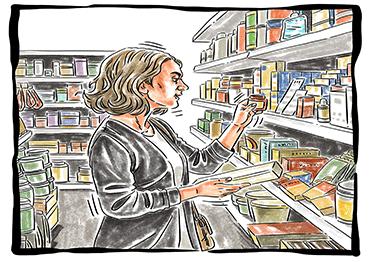s someone who considers myself a bit of a cook, I was super intimidated when I first arrived in China. Heading to the local markets, I was confronted with strange ingredients, different presentation styles, and of course, language barriers. The first real shop, if you can even call it that, was an open-air market right outside my neighborhood. I was thrilled to come home with two huge bags of veggies, some eggs, meat and even a few snacks for less than US$15.
But I did have my qualms. It just wasn’t something I was used to. I had questions about things, but I knew I had a budget, so I didn’t question it too much. Additionally, there was a bit of a learning curve when it came to communication, thank goodness for that little calculator and computer in our pockets our teachers said we wouldn’t have.
Looking back now, I really wish I had utilized that market more. I went by one day a few years ago, and it was long gone.
I’ll never forget the first time I found a foreign grocery store. I’m pretty sure I actually felt my jaw drop when the person in front of me spent 600 yuan (US$82) on just a few items. I thought to myself, “Woah, I won’t ever be able to do that.”
Fast forward… and well, I did become that person. I saw the numbers flash on the cash register screen and then on my Alipay transaction notification as I spent around US$95 on a handful of things at a French shop complete with treats from the US.
I soon became addicted to the luxurious cheeses and familiar items from back home that made my life seem easier, but my pockets much, much lighter. I can’t even explain to you the joy I felt when I saw a can of premade enchilada sauce (sad, I know).
But I started realizing I was getting too comfortable. Instead of enjoying the experience of going into stores, I would simply order everything online – which is admittedly one of my absolute favorite China conveniences. However, the detachment, ease of ordering, and not having to lug the bags home yourself, made it the ideal shopping mode for me.
Suddenly I found myself adding to my online grocery cart with the purchasing power of someone with a black Amex card… which I surely do not.
At one point, I realized it had probably been over a year since I’d stepped into a grocery store to shop. However, all that changed with a simple trip to a local grocer with a friend.
And even though prices in China are much cheaper than the American standard, even at the foreign shops, I realized walking into that store that I had quite literally been clicking my money away. The 20 yuan (US$3) peppers were now 5 (US$0.70) , and the 40 yuan chicken (US$5) was less than half the price. Nicely packaged, fresh and with none of the issues I had built up in my head. Then my friend did me the ultimate favor and showed me how to find shops like that on my Chinese grocery apps, and I haven’t looked back.
Don’t get me wrong – I still get my salt and vinegar chips and other nostalgic snacks from the foreign stores. But the bulk of what I buy now is from Chinese grocers. I wish I could say I now frequent grocery stores more often, but old habits die hard. I still order most of my groceries off the apps, but I also enjoy an impromptu trip to Beijing’s Sanyuanli wet market to get some quality meat, the feel of the market and discover things outside my regular shopping list. Did you know it’s not that hard to make your own enchilada sauce? Well, I do now. I even took a cooking class that introduced me to Chinese ingredients I would have never thought to buy. Now they’re staples in my pantry.
Convenience is king, but don’t convenience yourself out of your pocket money. The greatest thing is that you can spend as much or as little as you like without truly ever breaking the bank. And honestly? After getting hit with sticker shock every time I visit home, I’ve come to appreciate having fewer choices. Do we really need two aisles of top-to-bottom salad dressing?

 Old Version
Old Version